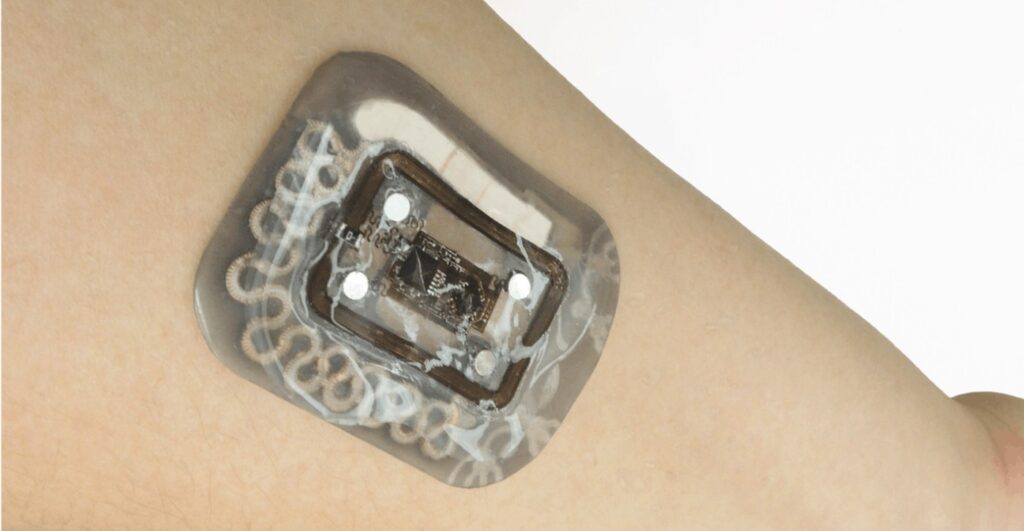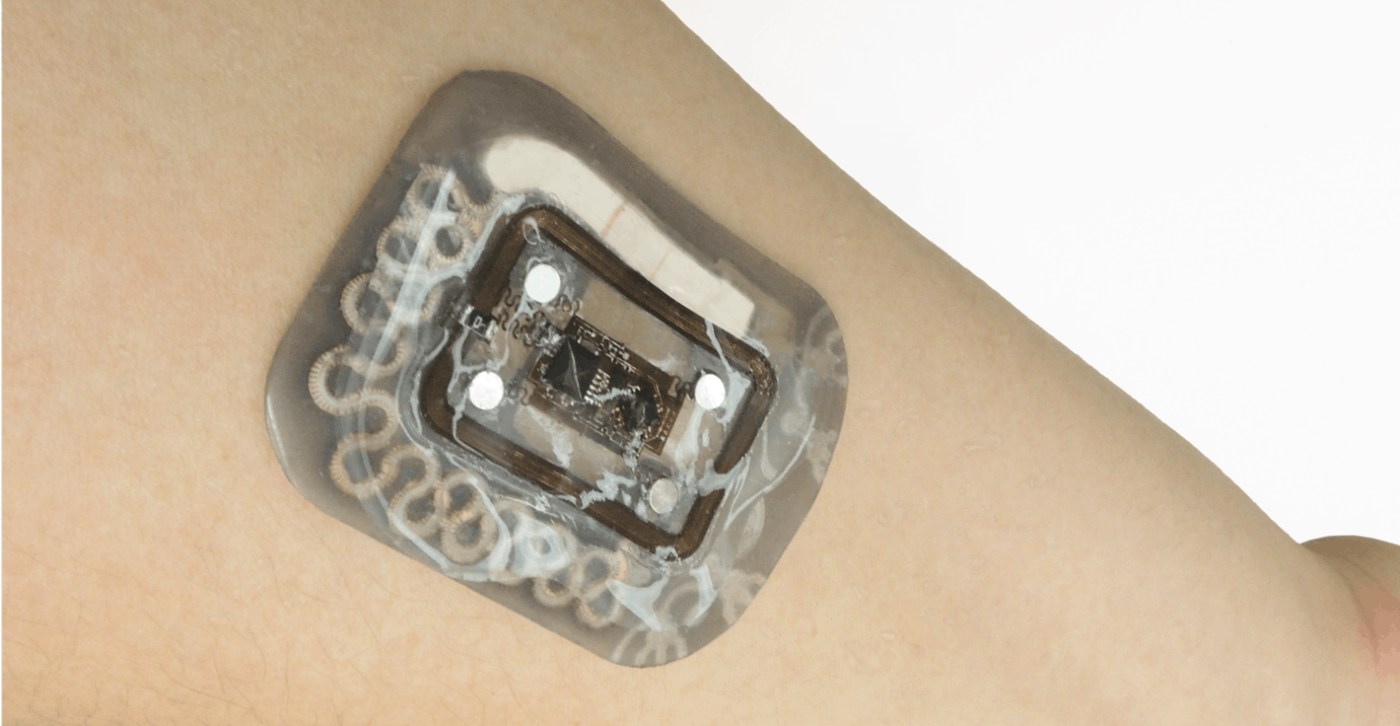A team from Northwestern University has developed a soft, silicon, skin-interfaced sensor that can analyze the molecular composition of sweat for things like cortisol, blood sugar, and vitamin C, sending the data to the wearer’s smartphone.

This data, the researchers hope, will allow people to better control their stress levels throughout the day.
Cortisol, sometimes called the stress hormone, can be measured in a person’s sweat. Released from the adrenal glands under periods of physical and mental stress, it can be a powerful performance enhancer—increasing energy production and glucose availability for the muscles during a “fight or flight” situation, for instance being attacked by a lion.
However, cortisol can also be released because of modern stressors such as money problems, issues at work, and other day-to-day worries that if built up over time, create the profile of chronic anxiety and can lead to an increased risk for diabetes, hypertension, depression, and obesity.
A chip on your shoulder
When someone wearing the chip sweats, the liquid runs through small channels into a series of chemical test sensors that look for different biological signals which could suggest a rise in cortisol.
Previous attempts in years past at creating devices like this were limited by the need to take sweat samples to laboratories for analysis, removing any ability for the individual to act on the data in a way that might prevent buildup of stressful feelings, or even an anxiety attack.
“Field tests illustrate capabilities in measurement of cortisol, glucose, and ascorbic acid (vitamin C) along with digital tracking of sweat rate and GSR across four healthy volunteers engaged in physical exercise on a stationary bike in a gym environment,” write the authors of the study, published in Proceedings of the National Academy of Sciences.
This was done in a laboratory-gymnasium for a week, and involved disrupting the sleep patterns of the participants in a way that was designed to mimic stressful long nights of studying.
CHECK OUT: Stressed? This Study Says You Simply Need a 20-Minute ‘Nature Pill’
Each day the trialists rode a stationary bike and the researchers used their chip to monitor cortisol levels, which normally move through the day in accordance with our circadian rhythms. At the end of the trial, which consisted of 14 recovery days of normal sleep supplementing with vitamin C—a vitamin used to decrease hormone levels—it was shown that the period of stress had dysregulated their cortisol secretion and led to increased levels of the stress hormone in their bodies.
“The subjects experience physiological stress, fatigue, and irregular life patterns during intensive work and with inadequate sleep. These conditions disrupt the cortisol–melatonin circadian rhythm [and] as a result, the hypothalamus region of the brain produces corticotropin-releasing hormone, which in turn… increases cortisol production and disrupting of cortisol circadian rhythm,” write the authors.
RELATED: Music Takes 13 Minutes to ‘Release Sadness’ and 9 to Make You Happy, Says New Study
They point out that saliva concentrations of cortisol were very similar to those registered by the small chips, suggesting that the data collected is quite reliable, as saliva samples are normally very accurate.
Such a device could be paramount in helping people relieve depressive or stressful feelings (not least because exercising hard enough to induce sweating helps with anxiety on its own).
MORE: Next Time You’re Feeling Particularly Stressed or Anxious, This Study Says You Should Play Tetris
Furthermore, the percent of the population of American adults with regular feelings of worry, nervousness, or anxiety is around 11.2%, while there are nearly 60 million doctors’ visits where mental or behavioral health is the chief concern.
Putting power into patients’ hands—in the form of a detailed diagnosis of cortisol levels, could help significantly to lower those numbers.
SHARE This News With Someone Who Might Need it On Social Media…




















